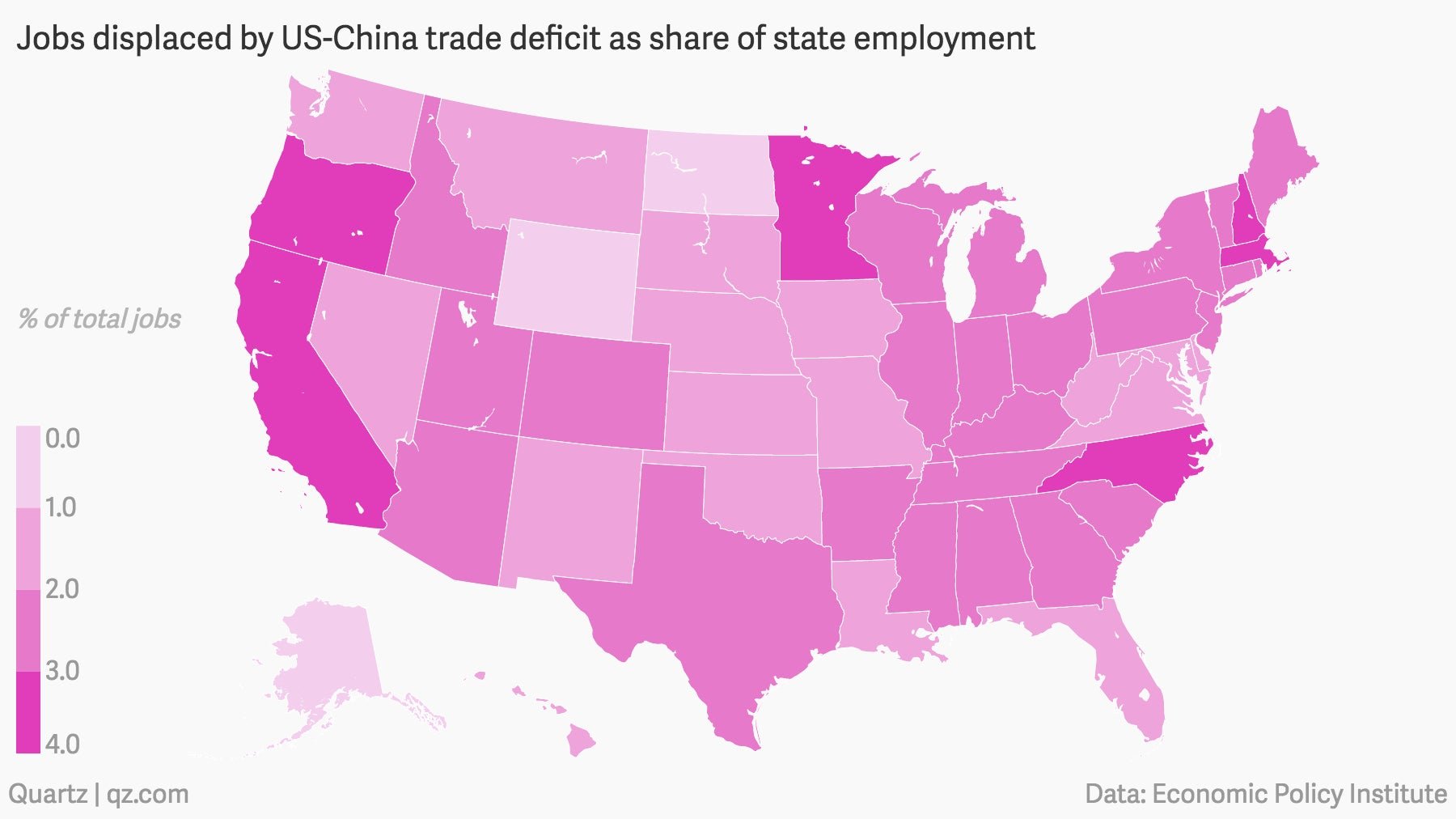China has stolen 3.4 million American jobs since 2001
Donald Trump relentlessly bashed China on his way to the White House, and not without reason. Between 2001 and 2015, the US lost 3.4 million jobs due to its trade deficit with China, nearly three-quarters of them in manufacturing, according to a new study by the Economic Policy Institute, a left-leaning research group.


Donald Trump relentlessly bashed China on his way to the White House, and not without reason. Between 2001 and 2015, the US lost 3.4 million jobs due to its trade deficit with China, nearly three-quarters of them in manufacturing, according to a new study by the Economic Policy Institute, a left-leaning research group.
The study vindicates Trump’s unstinting focus on “cheating China” during his campaign. “Any notion that their economy is based on a free-market system is simply not true,” Trump wrote in a Wall Street Journal editorial in Nov. 2015.
EPI’s findings back that up. In addition to manipulating its currency in the past—in effect, subsidizing exports and taxing imports—China also coddles many industries and engages in other practices that give its companies an unfair trade advantage.
However, the report’s conclusions also defy the campaign narrative (and conventional wisdom) that most of the jobs lost to China were in industrial sectors like steel and automobiles. “The hardest hit industry was computers and electronic parts—contrary to urban myth,” says Robert Scott, an economist at EPI and author of the study.
And while Trump’s populist message resonated strongly in the hollowed-out Rust Belt, those midwestern states aren’t the only places that have suffered from China-related job losses.

Seven out of the 10 worst-hit states, as measured by jobs displaced as a share of total employment, were in states that voted for Hillary Clinton—including Oregon, Minnesota, and California. Overall, states that voted for Trump’s competitor suffered just under half of the total jobs lost.
Research suggests that trade-related job losses were a less prominent factor among Trump supporters than the media narrative insinuated. For example, Gallup demographic research shows that his supporters tend to work in sectors less exposed to competition from China and other low-wage foreign manufacturing hubs. The EPI findings also challenge a related theme of the 2016 election—that liberals are ignorant of the pain of trade-related job loss.
This misperception might have something to do with the ways traditionally Democratic-supporting states differ from Republican-leaning states in dealing with job losses, says Scott. States run by Republicans tend to eschew spending, while Democratic-run ones tend to offset the decline of their manufacturing base with more generous social programs, propping up employment, he says.
“The policies that have the biggest impact are investments in education,” says Scott. “But it doesn’t matter whether it’s spending on healthcare or welfare—it’s dollars flowing into the economy, and that’s generating work.”